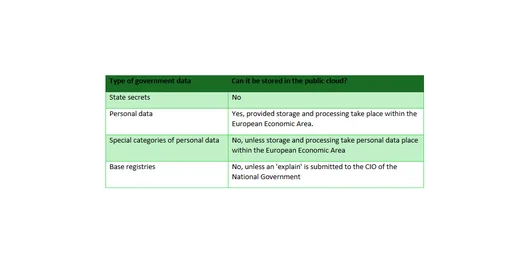What is sovereignty?
Sovereignty, in the context of digital services, refers to the degree to which a country or organization has control over its own data and infrastructure. When using public cloud services, such as those from hyperscalers, this control is not automatically guaranteed. Although all these companies offer their services from European data centers, legal control often falls under American legislation, such as the controversial Cloud Act. This creates the potential for the American government to access privacy-sensitive data, even if it is physically stored in Europe. And that's something we certainly don't want.
This raises questions about who actually has access to data, how that data is protected, and what the consequences are for the autonomy of government institutions using such services. The use of public cloud thus brings specific risks regarding sovereignty. For government agencies and organizations processing sensitive data, such as health information or basic registrations, these risks can be substantial.
The difference between private cloud and public cloud is important here. In a public cloud, the infrastructure is shared by multiple customers. This means that control over data and processes often lies with the cloud provider. In a private cloud, the infrastructure is used exclusively by one organization. This leads to more direct control and fewer sovereignty risks. Sovereignty issues mainly arise with the use of public cloud, where legal and operational control is often more complicated.
Government positions
In the Netherlands, the government has recognized this problem and established guidelines in the Government-wide Cloud Policy 2022 to manage the risks of cloud usage. This policy establishes that special rules apply to certain types of government data. Below is an overview:




